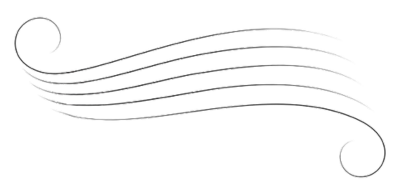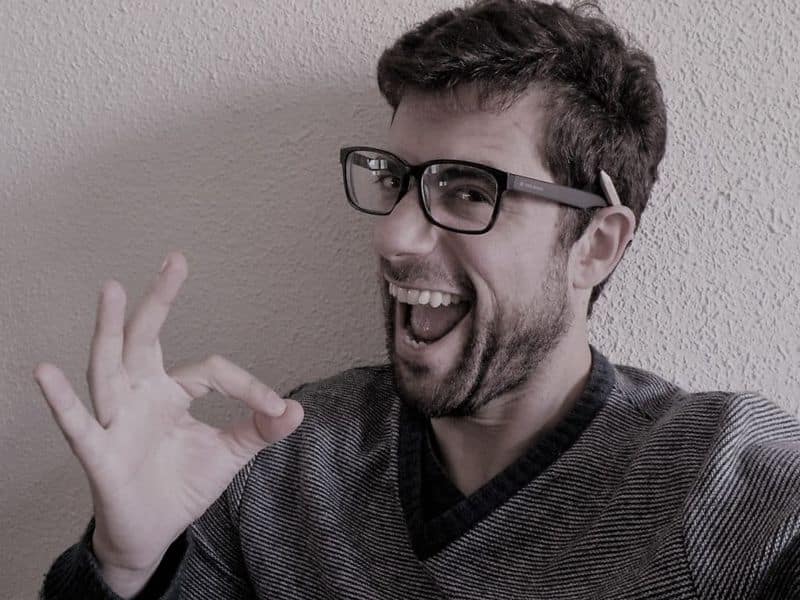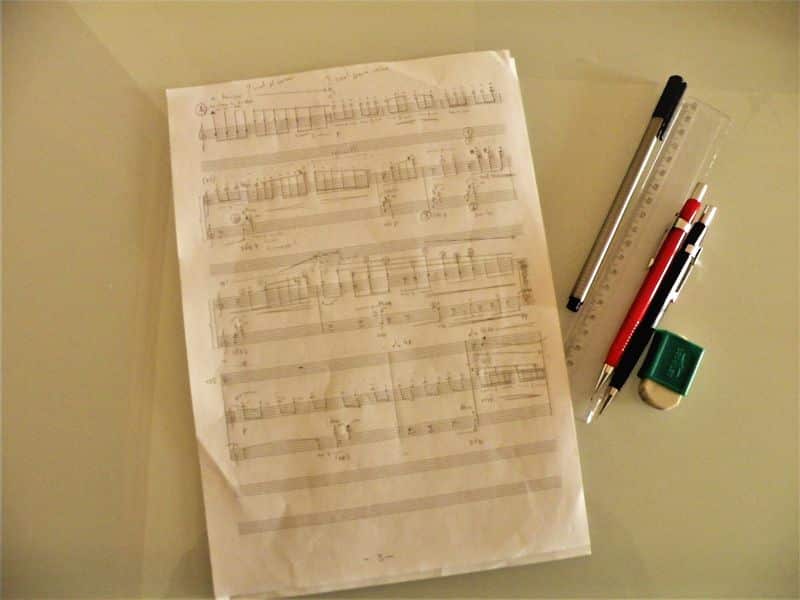When does the music finally end?
(post from the series My Way of Composing – click to see the complete series)

In this last post of the series “My Way of Composing,” I cannot shy away from reflecting on the end of a work. In previous chapters, I discussed the origins of musical ideas, their planning, and their execution through different mediums. Now we must face the question of concluding a compositional process. After all, when can a composer take a deep breath, confidently, and say to themselves in peace: “This piece is complete!”?

In general, a piece of work is considered finished when it has been revised and delivered. Revision is an inevitable process that begins soon after reaching a first finalized version of the piece. At this point, you certainly need the opinion of others, whether colleagues, friends, family, or whoever commissioned the music. People will always have things to say about music, and their comments are often unexpected. Although they may not always be accustomed to speaking deeply about music, when encouraged, people make very interesting associations between sounds and the world, regardless of whether they have musical training or not. Thus, the moment of revision and gathering initial feedback should ideally be a new moment of reflection, similar to that which inaugurated the entire process.
It is important to note that music is not made with precision. Composing the right piece does not work like a game of Tetris, where you need to fit pieces perfectly. Even if you receive very specific guidelines in a commission, your music will always be something dynamic, which accommodates and at the same time resists what you or others expect to hear. I often recognize, upon finishing a compositional process, that I could immediately start a new piece with the same purposes, and that this new piece would turn out different from the first. This is an essential characteristic of all art: your work is not to find the right answer to problems, but rather to respond to them through new questions.
Another factor to consider is revision ad aeternum. My mother is a visual artist, and I always found it amusing to see her “finish” a painting, then start touching up here and adjusting there, suddenly a figure is poorly done, but then the background color no longer matches the rest, etc., etc., and two days later the painting is completely redone, yet still being “touched up.” I have the same virus: as long as I have a score in front of me, I keep tweaking here and there non-stop. The same happens with recorded music, where I keep mixing, remixing, adding some effect, and sometimes it takes me a while to realize that I have transformed the original version into something else. Therefore, care is needed in the revision process, so that it does not end up being a process of destruction. I have a personal protocol that I try to follow strictly when I finish a composition, although I do not always have enough time for it. It is as follows:
- When I finish the first version of the piece, I check if everything is okay and let it rest for a day or two;
- I return to listen to it, and right away I find necessary revisions, mainly technical, but also some aesthetic issues. I make them promptly;
- When the eternal revision virus starts to awaken, I send the material to trusted people and do not touch it again until I hear their opinion (which may take another day or two);
- I make another revision, but this time I try to be as economical as possible;
- I send this version to those who will perform it or to whoever commissioned the music.
The completion of “O nefelibata”
It was music for the show ‘Mistureba,’ by the group Necitra (Porto Alegre). It was a dance and juggling scene, and the desired atmosphere was something ethereal. I composed the entire piece on the piano over two or three days. Then I began my protocol. (a) I gave the piece about 30 hours of rest and went to do household chores and errands. (b) When I returned and listened to the music again, I felt it lacked depth in its ethereal mood, and the solo piano had an intimate character that bothered me. With this in mind, I started filling spaces with some synthesizers, used as pads (background base) or small interferences on the piano sound. Here the bug caught on, and what was meant to be just an ethereal aura over the piano piece ended up turning almost into a piece for piano and electronic music. (c) Eventually, I decided to stop and send the material to the group. They had a rehearsal the next day and tried out the music. Everyone liked it, and a girl participating in the show mentioned she played the trumpet and that a solo might fit in the middle of the music, to merge the recording with a live performance in the middle of the show. (d) I went home and composed the trumpet solo, creating a new space for it in the middle of the music. To ensure that the recording would work even without the trumpet solo, I also made an alternative version, where this solo was replaced by a new piano part. (e) I sent it to them and, in this case, it was no longer necessary to tweak the music. Here is the result:”
The completion of “Epopéia Fantástica”
I composed this piece during my doctorate. It was a work specifically designed for a group of musicians in whom I already had confidence, as I knew the task would be challenging and I did not want to have a huge job composing a score that would ultimately end up in a drawer. Hence the unusual lineup: violin, oboe, trombone, percussion, and double bass. The instrumentation was thought out in terms of the instrumentalists, not so much the instruments. I experimented with various techniques and sounds in this music and, as the instrumentalists were also friends, I received many comments on writing and musical execution. As we had several rehearsals to prepare for the premiere of ‘Fantastic Epic,’ I noted everything I could and went home to make revisions and, when necessary, re-edit the parts to deliver them in their final version at the next rehearsal. In some cases, there were things I composed that did not sound good in any way, so there was no choice but to redo some passages with different music. This distinct process prevented the application of my usual revision protocol, but I think it paid off with its outcome and also with valuable lessons learned between rehearsals and revisions. See how it turned out:”
Conclusion
As you can see, it’s hard to say that a piece of music is completely finished, 100%, done and dusted. You really have to let go. I am never fully satisfied with my compositions, and I know I would never stop revising them. Whatever the protocol followed, it’s necessary to recognize that, at some point, you need to halt the process. At these times, it’s worth remembering that all the resources used (equipment, research, studies, etc.) would be useless if they hadn’t been orchestrated by you. Your mind was the crucial piece that set everything in motion, and now it’s time to trust the outcome of so many processes carried out, whether consciously or unconsciously.
Finally, it’s worth noting that a finished piece is not something isolated in a composer’s journey. In a way, every composition created extends its predecessors and provokes its successors. Therefore, from this perspective, all the pieces made are parts of a great, unfinished, and unfinishable music. When I consider something finalized and return to the blank sheet, I in no way feel like I’m back at square one, and I make sure to carry with me, from the first sketches, experiences I’ve lived in previous processes. In this sense, it wouldn’t be wrong to say that the blank sheet is a continuation of so many past sheets.

I hope you enjoyed this series of posts. If anything in particular caught your attention, or if you would like to bring up any topics for discussion, do not hesitate to contact me.
Until next time,
Bruno Angelo
Learn or Order from Bruno Angelo
A real composer to work with you.
